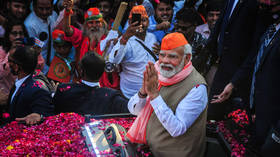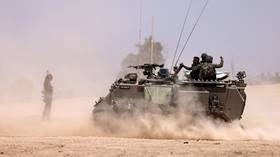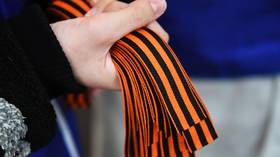One boy tells me,"Ma'am, don’t sit down, please. You'll freeze to death!"
RT presents War Witness – a special project dedicated to the 65th anniversary of the Victory in the Second World War.
World War II veterans recount their stories about the war, its effects and its human perspective.
Thomas J. Camarda, gunnersmate 1st class, US navy armed guard, USA, recalls a moment at which he was closest to losing his life and his ship.
“We were about four hours out of Guantanamo bay, Cuba, and our convoy was attacked,” he remembers. “At that time I was standing watch on the bridge. It was two o’clock in the morning.”
Camarda was standing in the ocean and suddenly saw one, then two, then three fires in the water.
“And it dawned on me that we were being attacked,” the gunnersmate says.
“At the third sighting of ship, fire in the water, there was a huge explosion in front of our ship. It was a freighter and it was a humongous ball of fire. And there was three “voom voom voom”, and then it started raining. And when it was raining, it was not exactly raining, it was debris from that ship that had splashed over on to our ship, and it rocked our ship and blew open some portholes. Apparently they were going after tankers and fortunately they hit the freighter in front of us instead of our ship.”
There were some war tricks one needed to know in order to survive in those days.
“At that time we were attacked by a wolfpack of Nazi’s U-boats,” Camarda recalls. “They usually travel in sixes. They’ll tail a convoy until that convoy reaches a certain area where they, I guess, rendezvous, and then they attack. They go under the convoy because this way the sound of their screws, their propellers, can’t be detected because there are other ships that are part of the convoy, so that’s one method that they use…”
Another war veteran, Nadezhda Matveeva, who was involved in the hard labor of digging trenches for the Soviet army, remembered the grim realities of those days.
”I remember how we were bombed. We could not see the sky because there were so many planes flying above us. They were flying so low we could see these good looking guys in leather helmets. We saw how they shot at us,” she said.











